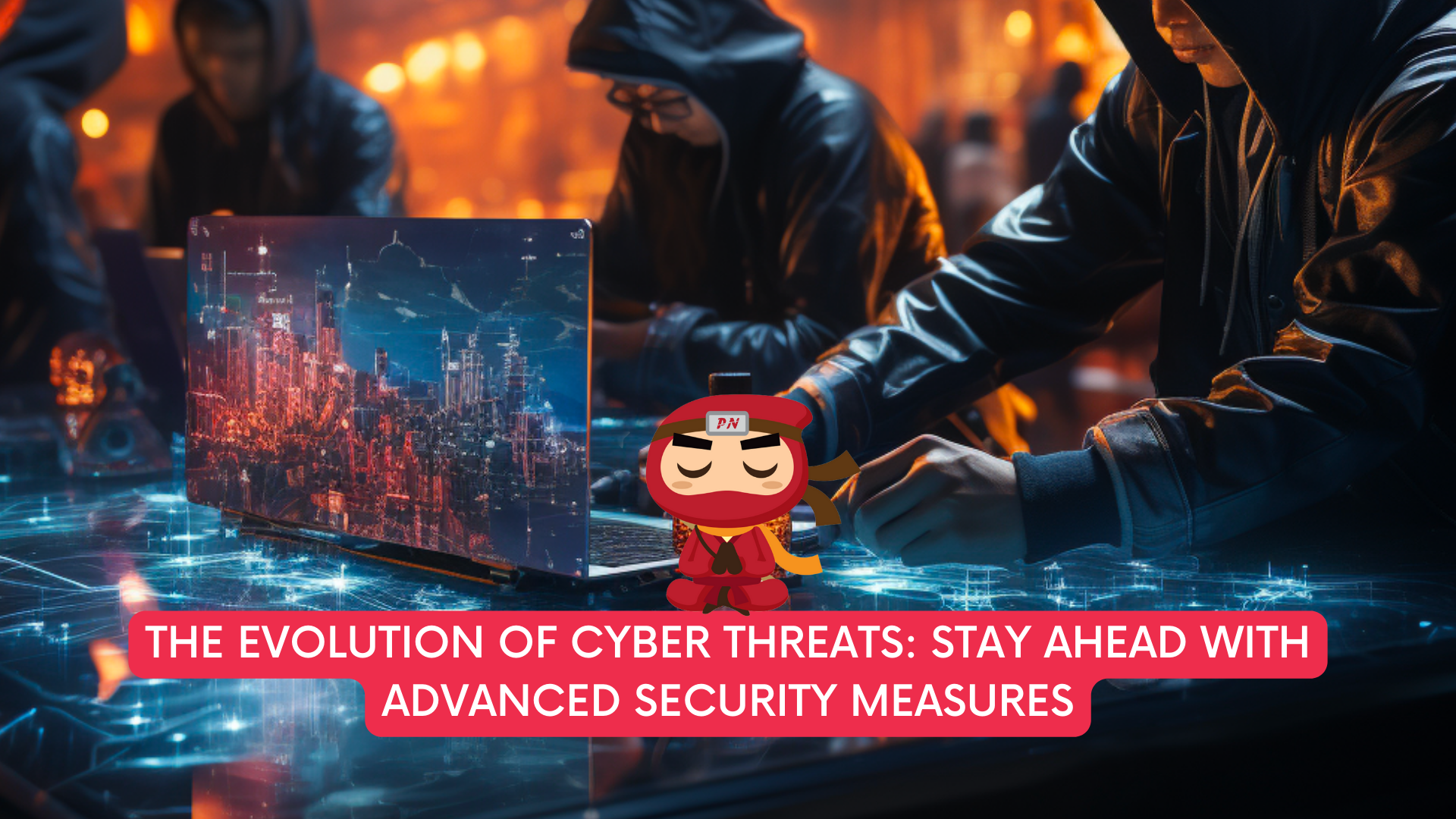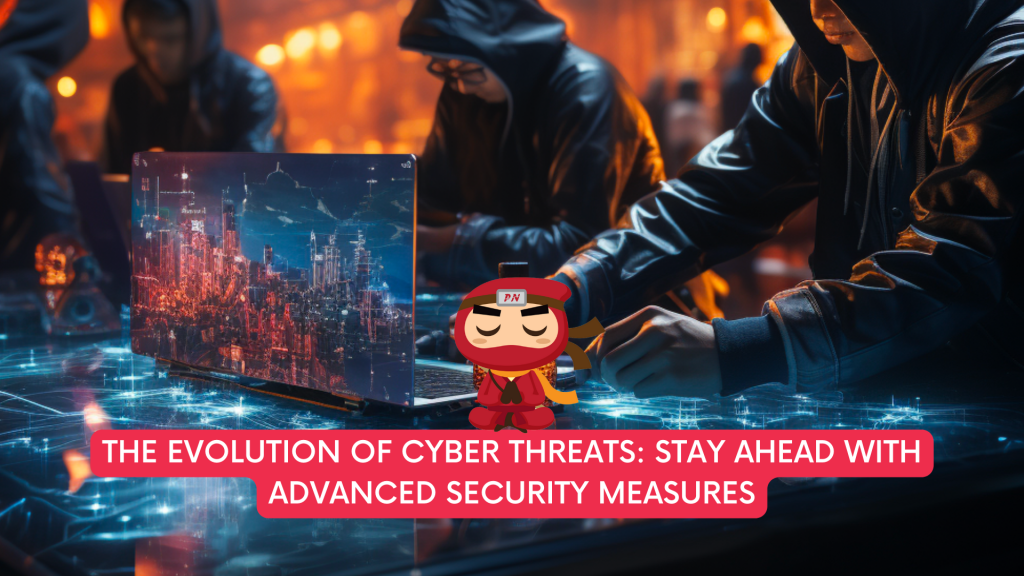KEEP IN TOUCH
Subscribe to our mailing list to get free tips on Data Protection and Cybersecurity updates weekly!







The evolution of cyber threats has become a relentless force, constantly adapting to exploit vulnerabilities in our interconnected digital world. As we witness the rise of sophisticated cyber attacks, staying ahead requires a proactive approach and the implementation of advanced security measures. This article explores the dynamic evolution of cyber threats and provides insights into the cutting-edge security measures crucial for safeguarding against these digital adversaries.
The realm of cyber threats is not static; it’s a dynamic ecosystem that evolves in response to technological advancements and defensive measures. Cybercriminals, driven by financial motives, political agendas, or sheer malicious intent, continuously refine their tactics to exploit weaknesses in our digital infrastructure.
Historically, threats were often characterized by viruses and simple malware. However, the landscape has evolved into a complex ecosystem of ransomware, phishing attacks, advanced persistent threats (APTs), and zero-day vulnerabilities. The targets have expanded from individual users to corporations, critical infrastructure, and even nation-states.

One notable aspect of the evolution is the sophistication of cyber attacks. Modern threats are not just about causing disruptions; they aim for stealth, persistence, and long-term compromise. APTs, for instance, involve attackers gaining unauthorized access to a network and remaining undetected for extended periods, exfiltrating sensitive information without the victim’s knowledge.
Ransomware attacks have become more targeted and sophisticated, with threat actors employing advanced encryption techniques and leveraging social engineering tactics to increase the likelihood of ransom payment. The evolution of threats demands a corresponding evolution in our defensive strategies.
To stay ahead of cyber threats, organizations and individuals must adopt advanced security measures that go beyond traditional antivirus solutions. These measures encompass a holistic and proactive approach to cybersecurity, addressing vulnerabilities at multiple levels of the digital ecosystem.
Traditional antivirus solutions are reactive, relying on signature-based detection to identify known threats. EDR, on the other hand, takes a more proactive approach by continuously monitoring and analyzing endpoint activities. It leverages behavioral analysis to detect and respond to abnormal patterns indicative of cyber threats. EDR is particularly effective in identifying previously unknown or zero-day threats.
Staying informed about emerging threats is crucial in the ever-evolving cyber landscape. Threat intelligence involves the collection and analysis of information about potential cyber threats. Integrating threat intelligence into security protocols allows organizations to anticipate and prepare for potential attacks. This proactive stance enables quicker responses and better mitigation strategies.
The traditional security model, often referred to as the “castle-and-moat” approach, assumes that everything inside the corporate network is trustworthy. Zero Trust challenges this assumption by adopting a model where trust is never assumed, and verification is required from anyone trying to access resources within the network, regardless of their location. This approach minimizes the potential damage caused by insider threats and lateral movement by attackers.
Passwords alone are no longer sufficient to secure digital accounts. Multi-Factor Authentication adds an extra layer of security by requiring users to provide multiple forms of identification before accessing a system. This could include a combination of passwords, biometrics, or one-time codes. MFA significantly reduces the risk of unauthorized access, even if passwords are compromised.
As organizations migrate their operations to the cloud, ensuring the security of cloud environments becomes paramount. Advanced security measures for cloud infrastructure include data encryption, identity and access management, and continuous monitoring for unusual activities. Cloud security solutions provide a comprehensive approach to protecting data and applications hosted in cloud environments.
The same technologies that power cyber threats can be harnessed for defense. AI and ML algorithms can analyze vast amounts of data, identify patterns, and predict potential security threats. These technologies enhance the speed and accuracy of threat detection and response, allowing security teams to stay one step ahead of cybercriminals.
While advanced security measures are crucial, the human factor remains a critical element in cybersecurity. Education and training programs are essential to raise awareness among users about the latest cyber threats and best practices for staying secure online. Employees should be equipped to recognize phishing attempts, understand the importance of secure password practices, and be aware of social engineering tactics.

In conclusion, the evolution of cyber threats necessitates a dynamic and adaptive approach to cybersecurity. Advanced security measures are no longer optional; they are a necessity in the face of increasingly sophisticated attacks. Organizations and individuals must continuously update their security strategies, leveraging technologies such as EDR, threat intelligence, and zero trust architecture to build a robust defense against the ever-changing threat landscape. By staying informed, adopting advanced security measures, and fostering a culture of cybersecurity awareness, we can collectively mitigate the risks posed by the evolving cyber adversaries and secure our digital future.
Your appointed DPO can work with you on your PDPA compliance, ensuring that there will be policies in place to make sure that the handling of personal data is PDPA compliant.
A Data Protection Officer (DPO) oversees data protection responsibilities and ensures that organisations comply with the Personal Data Protection Act (PDPA). Furthermore, every Organisation’s DPO should be able to curb any instances of PDPA noncompliance as it is the officer responsible for maintaining the positive posture of an organisation’s cybersecurity.
DPOs complement organisations’ efforts to ensure that the organisation’s methods of collecting personal data comply with the PDPA. It also ensures that policies are set in place to make sure that there will be no instances of data breaches in the future.
Don’t wait any longer to ensure your organisation is PDPA compliant. Take our free 3-minute PDPA Compliance Self-audit checklist now, the same “secret weapon” used by our clients to keep them on track. Upon completion, we will send you the results so you can take the necessary action to protect your customers’ data. Complete the free assessment checklist today and take the first step towards protecting your customers’ personal data.